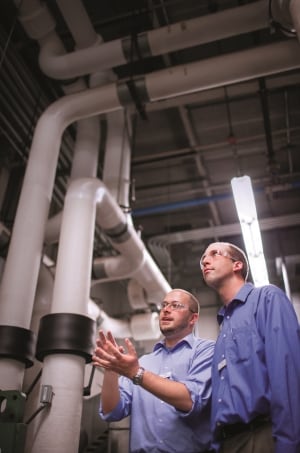Air=Money: Five Tips to Reduce the Energy Cost of your Compressed Air
Air=Money: Five Tips to Reduce the Energy Cost of your Compressed Air
It’s easy to understand why compressed air is often referred to as the forgotten utility; simply put, it’s taken for granted. But it’s no myth – compressed air is expensive, so much so that estimates indicate the value of wasted energy, due to poorly designed and maintained compressed air systems in North America, at $3.2 billion annually. At Swagelok, we want to help you increase the efficiency of your compressed air systems and eliminate costly operational losses.
Cost Reduction Best Practices
Compressed air is one of the principal forms of energy used in industrial processes – it is vital to operate the tools and equipment that keep your plant on-line and processing to capacity. Here are our five tips to reduce the energy costs associated with your compressed air:
1. Eliminate Pressure Drop - one of the biggest issues that can affect efficiency in compressed air systems is pressure drop. Pressure drop can be defined as the change in pressure from the compressor discharge to the actual point-of-use. As a rule, a well-designed system should have a pressure drop of less than 10 percent of the compressors discharge pressure from discharge to point-of-use. To minimize pressure drop, system designers must specify and select components – pressure regulators, filters, valves, hoses, fittings, etc. – that have the best performance with the lowest pressure differential.

3. Turn off Compressed Air Supply When Not in Use - we’re always taught to turn off the lights in a room when not in use to save electricity. Similarly, we should be shutting down compressors during non-production hours. If you have leakage in your system, a running compressor will most certainly be working against that continuous pressure differential, wasting energy and costing you money. Not sure if you have leakage in your system? Monitoring pressure decay in your system during compressor downtime is a sure way to find out.
4. Filtration, Filtration, Filtration - filters keep your compressed air systems clean and efficient. Don’t forget that filters get dirty, and buildup can result in significant pressure drop. Ensure filters are specified for best performance with the lowest pressure differential, and that your MRO includes a suitable element replacement schedule.
5. Check Hoses and Connection Points - we hate leaks and in a compressed air system, leakage can be the source of significant waste. Leakage is most prevalent near the point-of-use and is commonly found in worn hoses and incorrectly installed and maintained tubing and fittings. Therefore, it’s important to not only select high-quality components suitable for the application, but to also ensure installers understand and employ the correct installation practices and procedures based on guidelines set by the manufacturer.
Consult an Expert
At Swagelok we have learned that approximately two thirds of energy costs for compressed air and gas can be significantly reduced without large capital outlay. The solution is our Compressed Gas Leak Detection program. This comprehensive evaluation of your plant utilizes our expertise and sensitive technology to identify and quantify fugitive emissions at the source. We’ll work with your team to improve system performance and reduce operational costs related to energy waste.
Last year, Swagelok Evaluation & Advisory Services helped save our customers tens of thousands of dollars in wasted energy costs. Don’t believe the myth – your compressed air system is probably costing you too.
Learn more about our Compressed Gas Leak Detection Program



